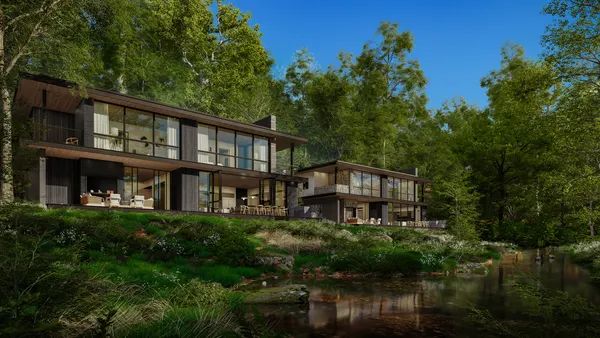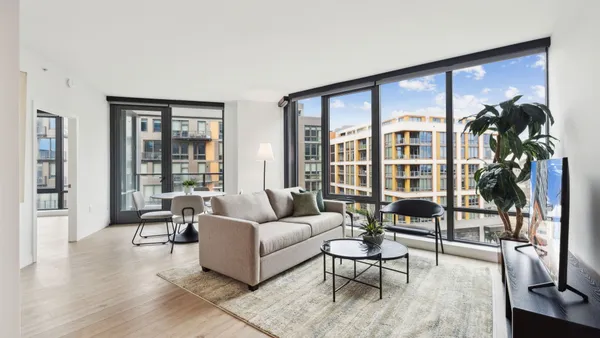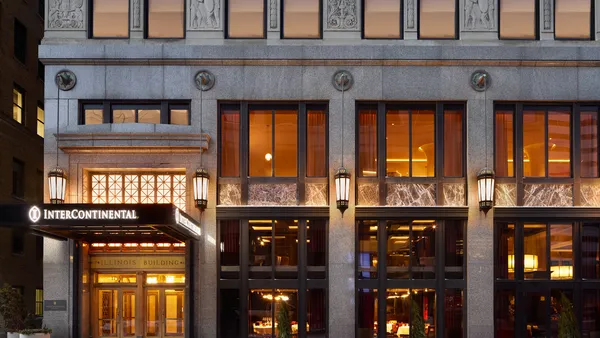Dive Brief:
- The Dodge Momentum Index, a benchmark that measures nonresidential building planning, tumbled 2% in May due to slower commercial activity, according to a Dodge Construction Network report. The index, which peaked in December 2022 and typically leads actual construction spending by 12 months, fell for the third consecutive month and could signal further sluggishness in the second half of this year.
- Prolonged low levels of commercial construction predominantly stems from persistent weakness in the hotel and office sectors, which continues to drag down the overall index, according to the report.
- “The DMI dipped in May amid sustained weakness in commercial planning activity,” said Sarah Martin, associate director of forecasting for Dodge Construction Network. “Sustained elevation in the federal funds rate and tighter lending standards will likely constrain growth in the DMI over the second half of 2023.”
Dive Insight:
After getting off to a rocky start in 2023, the commercial sector dropped another 6.1% in May.
The Dodge report follows the American Institute of Architects’ Architecture Billings Index’s most recent report, which showed business conditions softened again in April. Excluding a slight rise in March, that now marks a decline in billings at architecture firms in every month since last October.
Meanwhile, concern about a variety of factors remains, including interest rates, financing and the lingering potential for a recession, according to the AIA.
Despite the slower activity on the commercial side, the planning index remains positive over the past 12 months, according to Dodge. On a year-over-year basis, the commercial and institutional components remain up 7% and 18%, respectively, with the overall index up 11% for the year. Institutional activity, which includes healthcare and education projects, improved 5.6% in May.
“Institutional planning steadily improved over the month as research and development laboratories and hospital projects steadily entered planning,” Martin said, noting that the index remains above its historical average. “This paints an optimistic landscape for nonresidential construction in mid-2024, as the economy recovers and the Fed begins to pull back rates.”
The U.S. hotel construction pipeline grew slightly in late 2022 for the first time since 2020, according to data released by STR. But the overall pipeline continued to contract year over year.
STR’s report noted that New York City, Phoenix and Dallas would see the largest supply percentage increases from ongoing construction projects, with luxury and upscale segments leading among hotel chain scales’ developments.











